Impressions from Fes
Walking down the tiny streets to the side of the hotel that lead down to the Medina we meet with our young friend Omar. Fes seems to be a land of polyglots. Little kids speak numerous languages, Arabic, French, Spanish, Italian, German, English. Omar is one of the young multi-lingual boys who follows us around offering his service as guide, which we readily accept. We talk to Omar in Spanish mostly. His English is good but we can understand his Spanish much better. Sometimes when the three of us walk around the conversations between us end up being a melange of languages with sentences moving from English to French to Spanish.
As we walk I hear Moroccan music coming out of one tiny shop, then the next has hip hop music, hooded figures and scarved heads, wooden wheelbarrows, donkeys laden with animal skins or tanks of butane all quickly pass by us. We make our way down to a crossroads that Omar tells us it is the main market area for this section of the Medina. It has an open area that is no bigger than a large living room in an American home. We see a man sitting at a table piled with raw meat in the center of this triangular crossroads area. I quickly scan the table to try to identify what is on it: large chunks of red meat, what appears to be large black tongues, next to the tongues is a triangle of black meat and as I look closer I see a large black eye staring at me from the middle of it. The sight of the eye makes me gasp, physically jump and turn my head away. I’m not sure why I have this reaction, I’ve seen far worse in my travels, but it seems like such a nightmare image to have a black eye staring directly at me from a table of meat in the middle of this macabre marketplace.
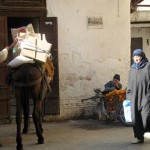
We move on through tiny little stalls selling a variety of cooked meat mixtures, bowls of Moroccan salad, fried dumplings, sheik kabob, plus fruits and vegetables. We pick up some oranges, strawberries, apples and bananas from a vendor. On our way back we pass the neighborhood bakery. This is small room filled with a large stone wood-burning oven which is kept going day and night by a few men. It isn’t that there is an oven in the room, more than the room is an oven. The people of the neighborhood make their bread at home then bring it to the bakery to have it baked. I guess this keeps down the smoke that would accumulate if everyone had a wood burning oven going in their homes to bake their bread. As we pass I ask Omar if it is okay to buy some bread. It looks so good just sitting there, fresh out of the cave of an oven, round flat loaves that remind us of the painting of The Last Supper. It looks just like the bread that Jesus would have passed around the table. When we get home we have a dinner of fruit and bread with butter. The bread tastes like soul food. The oranges are large, sweet and juicy, the strawberries delicious. Everything is a welcome change from the hotel fare left out on buffet tables.
Later we go back out with Omar, who is always waiting on the road to the side of the hotel leading into the Medina. At our request he takes us back to the market area so we can have a local dinner of meat skewers, bread and mint tea. We are taken to a tiny place where a lone man has a charcoal grill and a large pile of raw chopped cow meat. We asked for 8 skewers (they are very small) and one piece of bread. As he starts putting the raw meat onto the skewers Omar goes to get us two mint teas from the stall on the opposite side of the street. We are motioned behind the man who cooks our dinner to sit behind him at the small table inside his establishment, which is no bigger than a small gas station bathroom. In fact the stall looks exactly like a dirty truck stop bathroom with a sink covered in grime, a refrigerator, a table with the raw meat and a few visiting flies. The man is very friendly, reminding me of the cook (Barbecue Bob?) character in South Park cartoons.
There is a small boy at the table with us. He has his school books with him. I ask the owner if he was his son and am informed that no, it is his friend’s son and who stops by occasionally to practice his French. I am always delighted at any opportunity to speak French so I start speaking to the boy. The man prods the boy not to be shy and to answer me. We have a basic conversation (he’s 9 years old, in elementary school, etc.). Omar shows up with the tea and our bread and meat is given to us. It is all delicious. As we continue to talk to the cook and the young boy, Omar is waiting somewhere out of site, as it is illegal for him to actually guide us around without a license.
As we are finishing the calls to prayer start up and the air is filled with wailing. I ask the cook if he is going to go pray and he replies that he needs to watch the store but points to the schedule on his refrigerator of when the calls to prayer happen everyday (5 times a day).
I realize I am becoming my dad, as I now relish in asking people about their Islamic practices: ¨Did you to pray today? Do you pray 5 times a day? Why does have to be 5 times? Did you pray at 5 this morning (the first call to prayer)? Why do you have to wash your body before you pray? Do you give 2.5% of your earnings to the poor? Why are women sent off to pray separately from the men? Which way is East? Do you do Ramahdan?¨¨
After we eat Omar takes us back to the hotel and surprisingly refuses the money Mark offers him for his services.
On one of our first journeys into the Medina we ended up at what used to be a Jewish museum with ancient artifacts from the Jewish community who has inhabited Fez for centuries. The museum is filled with treasures, minoras, swords and daggers encrusted with jewels and camel bone, painted wooden doors, torahs, silver wall plaques, all kinds of armoirs and chairs. The place was filled with Jewish treasures that just kept you looking and asking what the story was behind each piece. The greatest treasure of all though was the proprieter himself, Jahlil. He is a Jewish man from Morocco who looks like a cross between William Burroughs and Woody Allen. He is tall with graying hair under a pork pie hat, a long black overcoat, black jeans and tennis shoes. He told us stories about every piece in the place and I spot the Kaballah door that we liked in an art gallery earlier. This one was painted 150 years ago by a Jewish lady whose signature is in the door. It is painted with vegetable dyes
He tells us that the other door we saw was an acrylic replica of this door, which is the original Kaballah door. He said someone came in a took photographs of the pieces in his museum and is now creating replicas and selling them as originals.
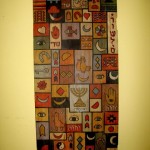
Mark and I both love the door with all of its symbols and writings. I dub it “The Door to Heaven”. We ask the price and he gives us one that is much lower than the price in the art gallery for the replica. We are too tired to even think about making a decision and start to leave. He offers us tea which we decline because we are stuffed from lunch. The price of the door lowers two times before we leave the place to from 2500 euros to 1000 Euros. We say thank you and shake hands but we are just too tired to think about making a purchase that day.
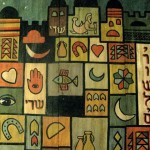
The next day we headed out with a hotel affiliated guide to the Berber village of Ifrane, in a comfortable mini-van. Our final destination was to hang out and record the sounds of the forest monkeys in the Mountains of Morocco. Along the way a 90 year old woman who lives in a cave, as do her Berber neighbors. The cave has an upstairs area where we are told her 110 year old husband lives. She brought us mint tea and did a little show for us where she put on her shawl and balanced a full bucket of water on her head. She is 90 years old but did a jig for us with the full bucket of water on her head. Through our interpreter/guide she told us incredible stories of what she has done in her long life. I told her how people in Morocco are always mistaking me for a Berber (true) and she says, ¨Lucky you are not a Berber though. A berber has few opportunities in life.¨
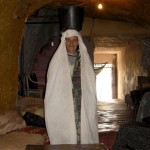
On our way back we mentioned the door we liked in the Jewish museum to our guide. He confirmed that it is the same museum he is thinking of, that there is only one Jewish museum in Morocco, then he told us that the owner is a very good friend of his. In fact the owner helped out our guide during the two years he was in Paris. He tells us he can get us a great deal on the door if we’d like and we say sure. He calls Jalil the WIlliam Burroughs look-alike on his cell phone and confirms a new price of 700 Euros. We couldn’t pass it up since it felt like destiny that we should have this painted door to Heaven.
The next morning Jahlil shows up in his black overcoat and signature hat at our hotel and leads us down to the museum. He seems to glide slowly through the Medina, and everyone seems to know and respect him. Once at the museum we look at every piece again and listen to more stories. The museum closed down 9/11/2001 and has remained so for 7 years. It holds the collection of his grandfather, who bequeathed it to Jamil’s mother. Now his mother has died this last month so he has inherited the museum. He presently lives in Paris and is happy there, has come back to Fes to liquidate the museum and sell the building.
We then got to business and agreed on the 700 Euro price. Shipping arrangements were made. We followed Jalil who glided like nobility through the medina maze to a very modern cash dispenser which gave us the equivalent of 700 € in deerhams.We were both really charmed by our new friend Jahlil, he is one of those ¨stranger than fiction¨characters one can only meet when travelling. Jahlil also tells us how cheap it is to buy property in Fes and that if we are ever interested to contact him.
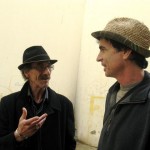
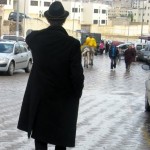
Sounds
We are recording all kinds of sounds but the main ones are the calls to prayer. These happen 5 times a day starting at 5:00 AM. Each neighborhood has a mosque with a minaret. On the minaret is a loudspeaker and 15 minutes before prayer time a Mosque elder wails into the microphone as a call to come to the mosque and pray. The effect is astonishing and eerie as the whole city rises up in wails and moans. You can hear the calls far into the distance but the minarets that are close are loud and not easy to ignore. The sounds bounce off of the city walls and the surrounding hills.
We also recorded many of the workshops in the Medina as they are small and focus on one function. For example there is a furniture building section that has 6 or 7 tiny carpenter workshops. This was perfect for getting a carpenter workshop sound. We did this for sewing, weaving, silver and brass work and general market atmosphere.
We are also getting some great weather sounds as the thunderstorms roll through and dump their deposit of rain quickly and efficiently.
We also got the sounds of the forest monkeys fighting for the pecking order of who gets the peanut first.
We are thinking of making an Islamic Relaxation CD with our call to prayer sounds.
Facts
The city is Fes. The hat is a fez.
The people speak Arabic as their main language and French as a second. Many seem to be able to speak Spanish.
The Muslims here seem to be peaceful, serene and open.
There are mainly Arabs and Berbers living here along with a small minority of Jews.
Guides
Guides are invaluable. The official ones will take you through the labyrinth of tiny streets to the main site-seeing areas but they also get a large commission for everything you buy from the stores and workshops they take you to. So you end up feeling like you’re on one long guided shopping trip. They will also take you to all the Mosques and tell you some history but their main goal is to get you into a shop and buy some well made souvenirs.
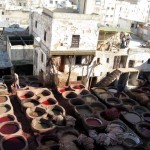
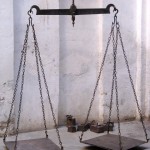
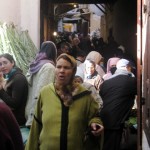
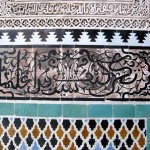
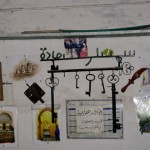
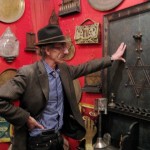


Recent Comments